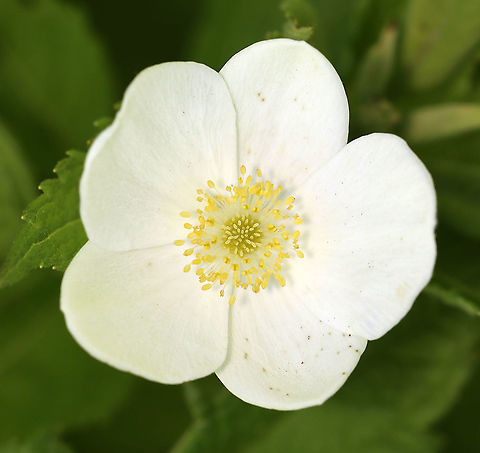
Appearance
The Canada anemone has shoots with deeply divided and toothed basal leaves on 8–22 cm . They grow from ascending caudices on long, thin rhizomes. The shoots are 20–80 cm tall, and leaves are 4–10 cm by 5–15 cm .Flowers with about 5 white, petal-like sepals and 80-100 yellow stamens bloom from late spring to summer on stems above a cluster of leaves. The sepals are obovate and 10–20 mm by 5–15 mm .
When they are pollinated, the green pistils in the middle of the flower become a rounded to slightly lengthened seed head. The seeds are achenes, with an almost round body and a beak.
Anemone canadensis closeup.jpg|Closeup of a flower with light green pistils in the middle of fairly old stamens, and white sepals behind them
Distribution
''Anemonastrum canadense'' is native to Canada and the west central and eastern United States.Defense
It is likely that most anemones contain the caustic irritants of the family Ranunculaceae.Uses
In former times it was used medically by North American Indigenous peoples as an astringent and as a styptic for wounds, sores, nosebleeds, and as an eyewash. The root was respected by Plains tribes and used for many ailments.References:
Some text fragments are auto parsed from Wikipedia.